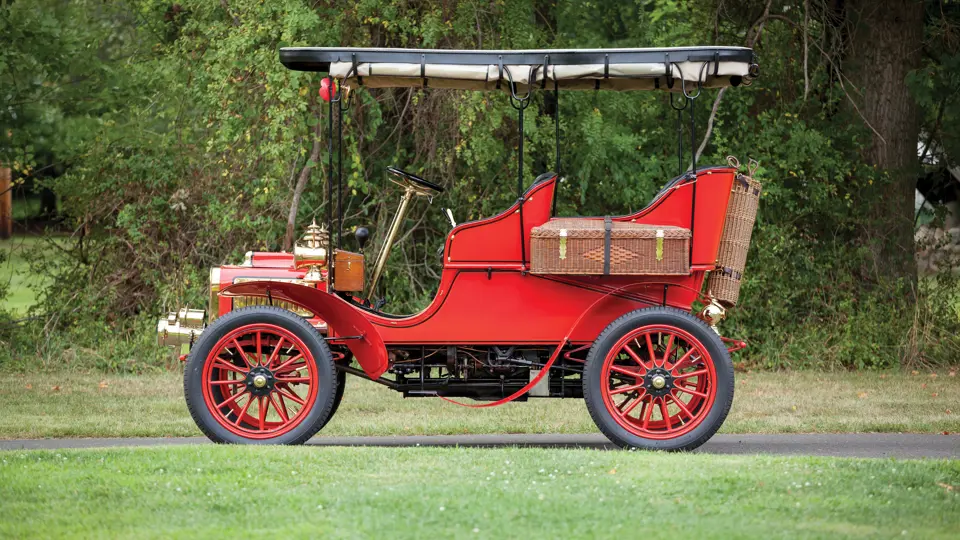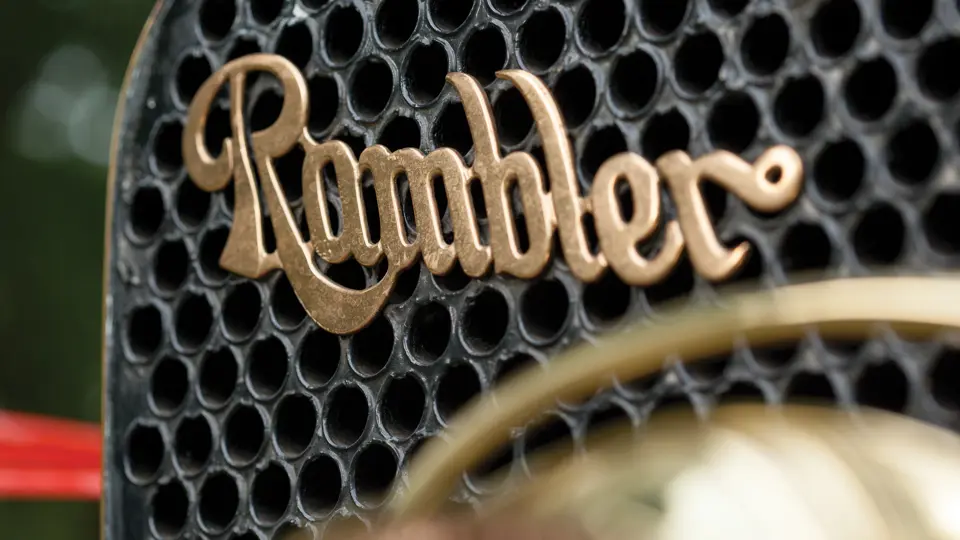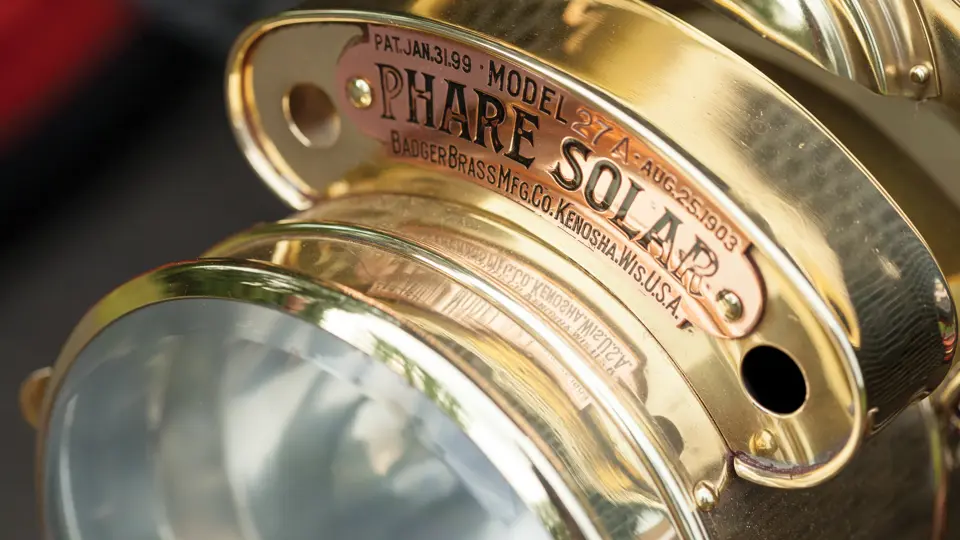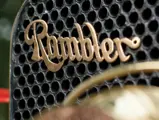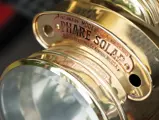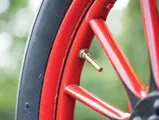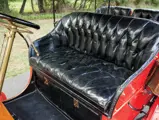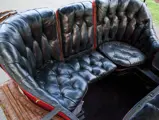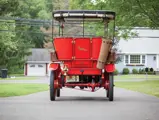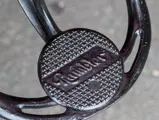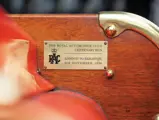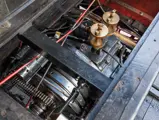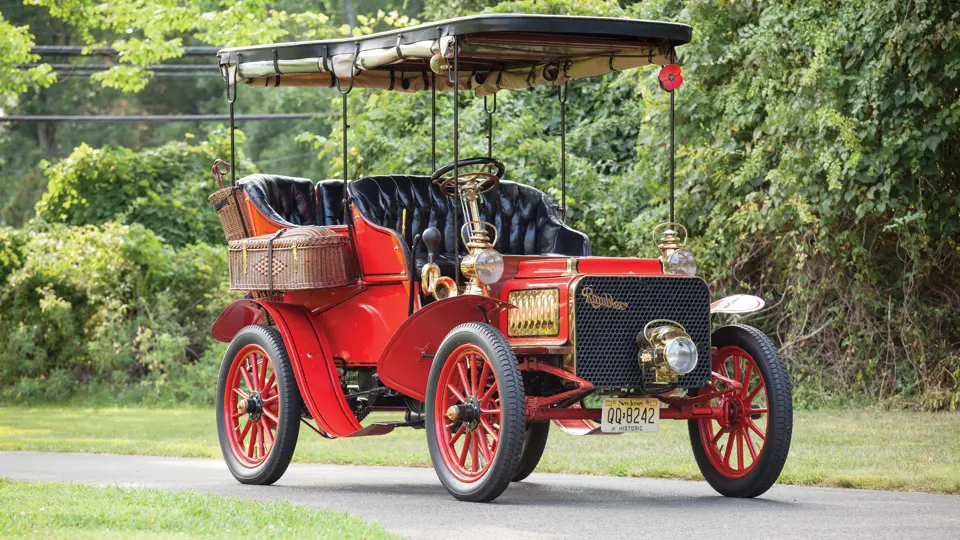
1904 Rambler Model L Canopy Tonneau
{{lr.item.text}}
$154,000 USD | Sold
{{bidding.lot.reserveStatusFormatted}}
- Formerly owned by Richard Teague and Henry Petronis
- Single ownership for over 20 years
- Subtle upgrades for reliable long-distance travel
- VCC dated as a 1904
- London to Brighton veteran; ideal for brass tours
16 bhp, 235.5 cu. in. twin-cylinder engine, five-speed Harley-Davidson manual transmission, full-elliptic suspension, and rear-wheel hydraulic drum brakes. Wheelbase: 84 in.
As with many earlier auto manufacturers, Thomas Jeffery started out with bicycles, which were sold under the Rambler name. He built a single-cylinder car in 1897, and the following year, his son, Charles, built two more, which were considerably more sophisticated. By 1900, the Jeffreys and their Rambler automobile were on the show circuit, flaunting a prototype at Chicago in September and at the first national auto show in New York that November. The Jefferys, encouraged by positive press, sold out their bicycle business to Colonel Albert Pope and set about building a new factory at Kenosha, Wisconsin, where the production Rambler would begin coming off the lines in February 1902. With production of 1,500 cars in its first year, the company immediately became one of the top three automobile manufacturers in America.
Rambler would eventually evolve into Jeffery, which would then become Nash in 1919. Nash introduced its very own and very different Rambler in 1950, and then the company eventually became part of American Motors. American Motors’ tenured styling chief, Richard Teague, was an appreciator of the automobile’s past, particularly when it related to companies for which he had worked. Naturally, this handsome 1904 Rambler Model L was part of Mr. Teague’s well-known personal collection.
The Model L sports a 16-horsepower, twin-cylinder engine with mechanically actuated valves and dual carburetors. Its body is known as a canopy tonneau, which was a reference to its fixed surrey-style top and the tonneau-style rear seat. Passengers enter and exit through a door in the back of the seat, requiring the Rambler to be backed up to a sidewalk or entrance, which was handy in these days of muddy, rutted roads. As stepping up into the car required a skirt-sporting lady to show considerable leg, this was quite a racy body style for the 1900s.
The current owner has possessed this Rambler for over 20 years, acquiring it after ownership by well-known enthusiast Henry Petronis and upgrading it for the long tours that he has enjoyed with the Horseless Car Club of America. Hydraulic brakes have been added to the rear wheels, allowing the Rambler to be safely brought to a halt on modern roads, and a five-speed Harley-Davidson transmission was also installed to back up the original unit, which is used for reverse. As the Rambler is dated as a 1904 by the Veteran Car Club, it is eligible for the London to Brighton Veteran Car Run. In fact, it is a proven “L to E” competitor, as it completed the run successfully in 1996 with its present owner behind the wheel.
When it comes to Veteran automobiles, finding an American one that was produced before 1905 and is not only eligible for the London to Brighton but also capable of the challenge is somewhat difficult. It needs to be powerful for its age, durably constructed, and handsome in appearance, and one capable of carrying a few friends along for the ride does not hurt. This jaunty Rambler succeeds in all of the above.


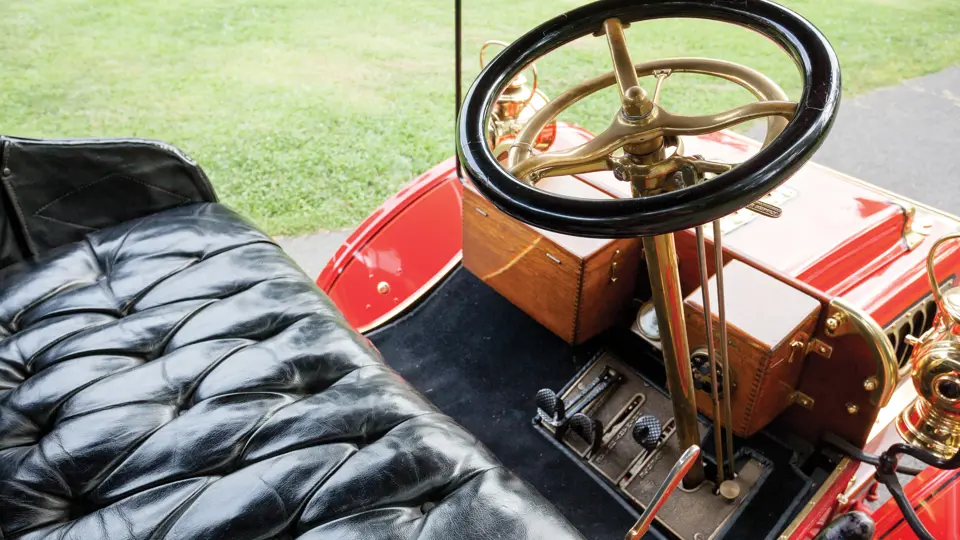

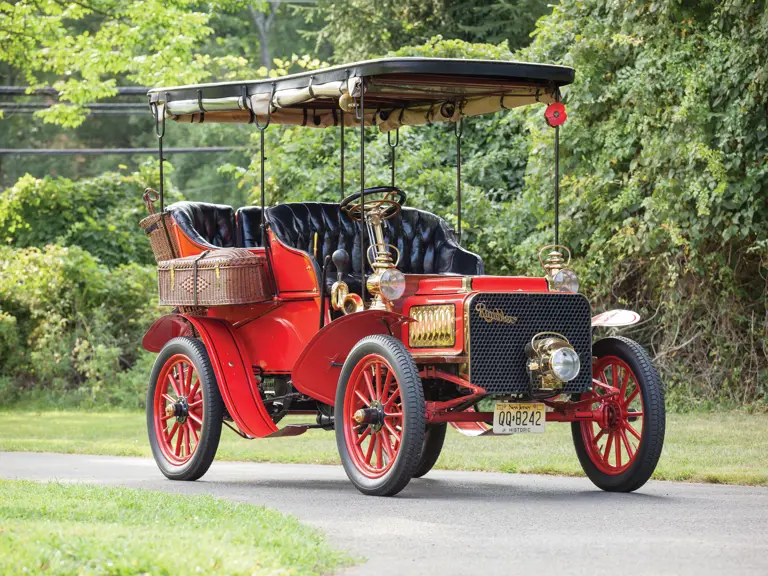
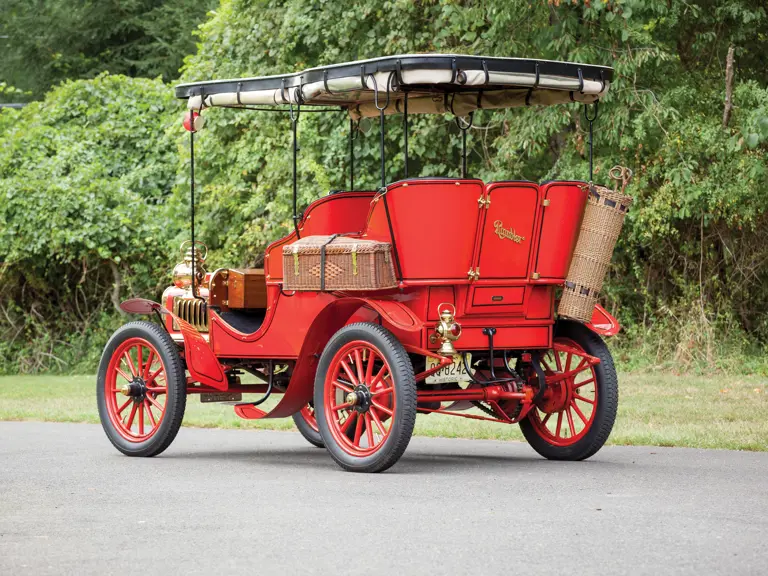

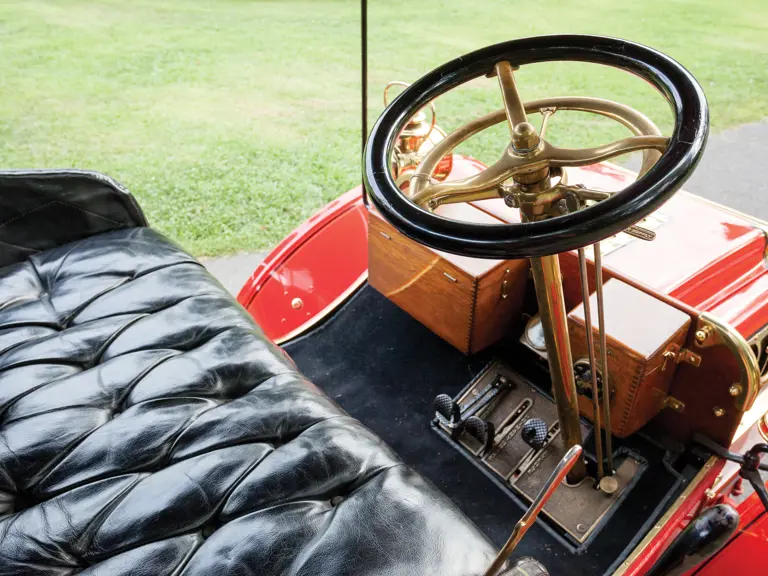
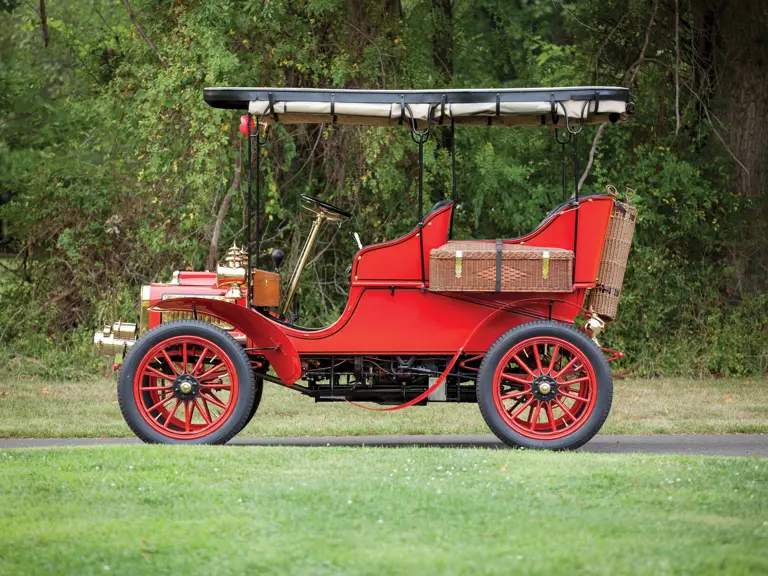


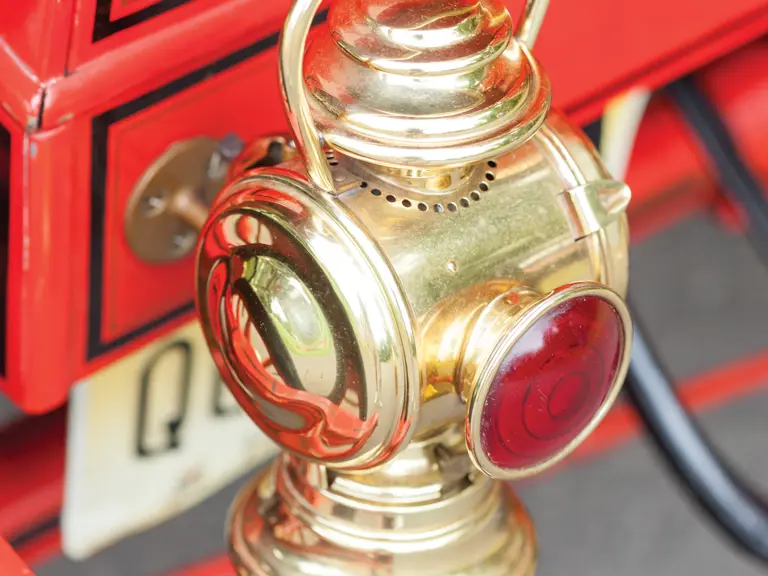
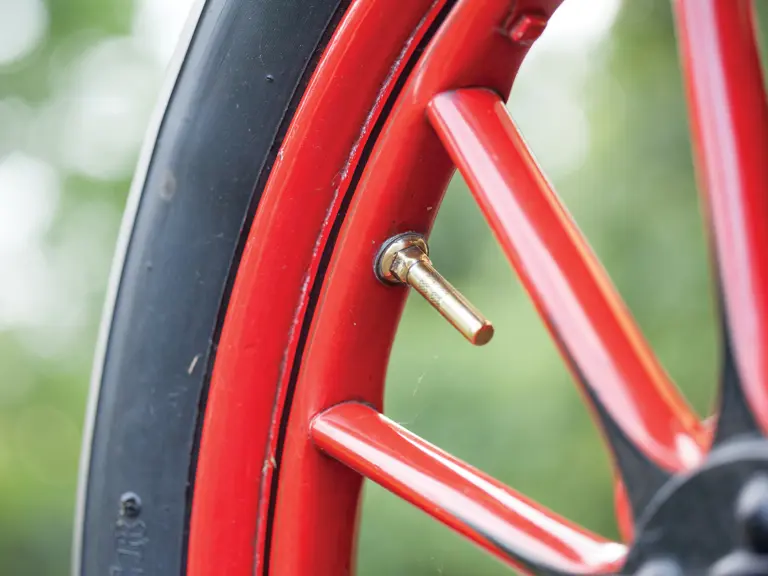
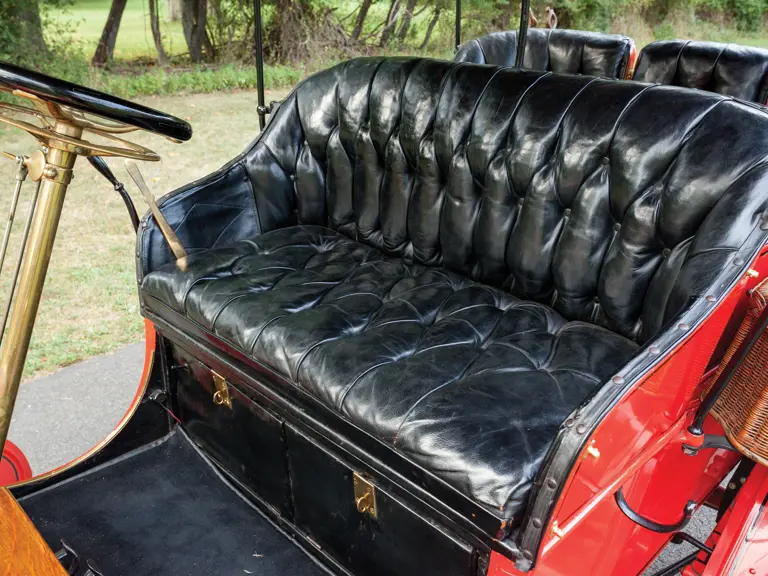
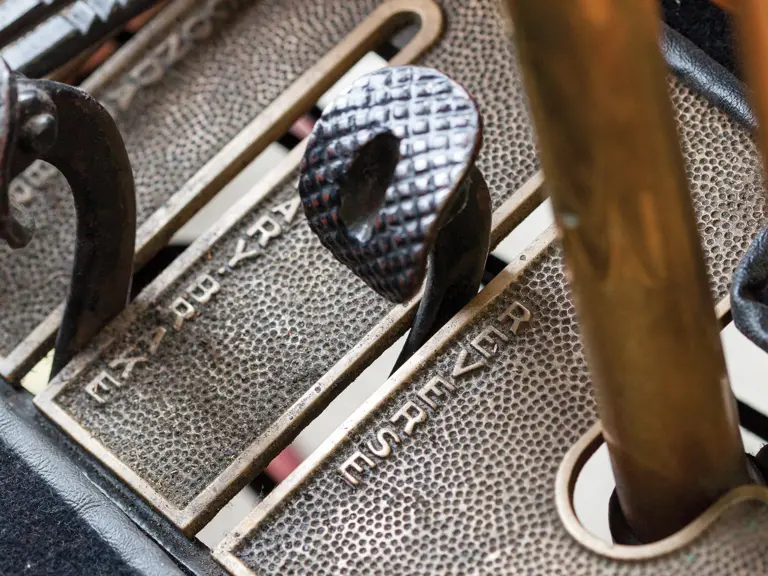
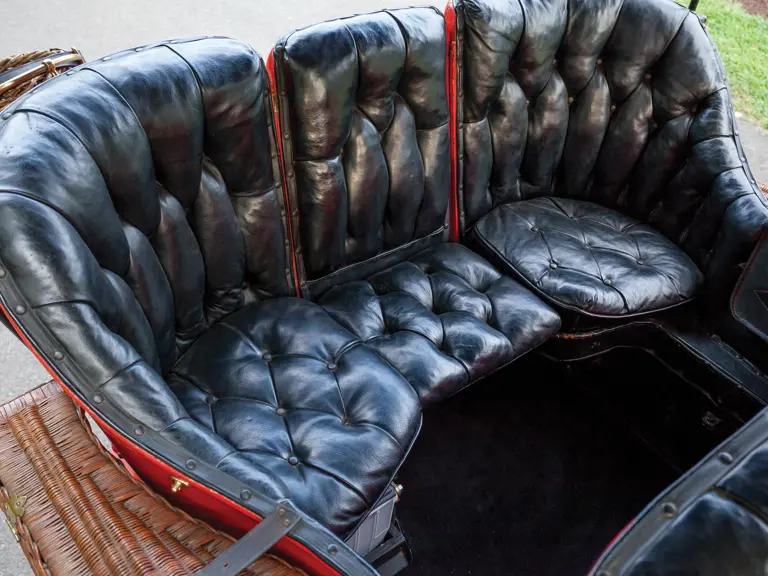
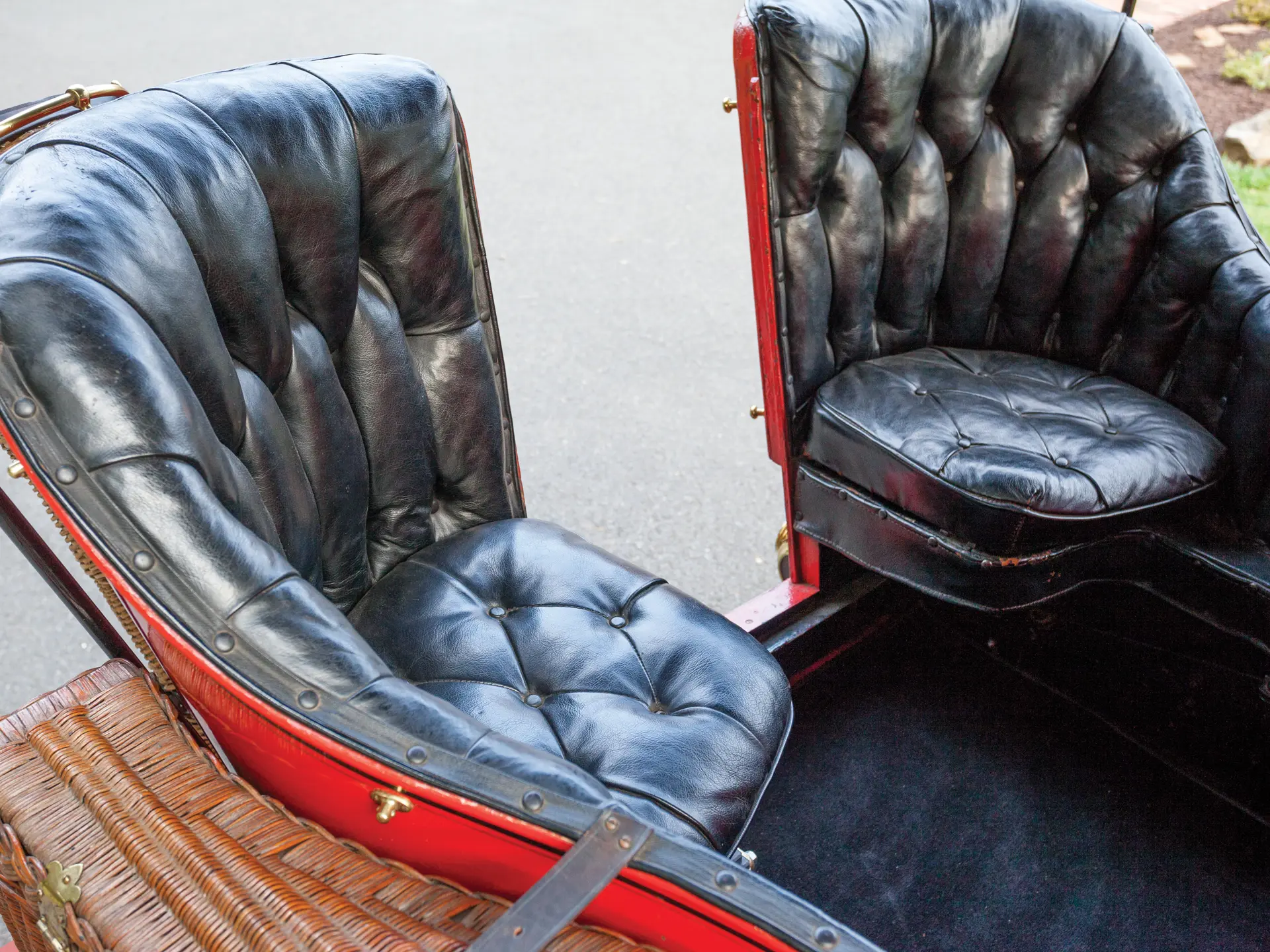

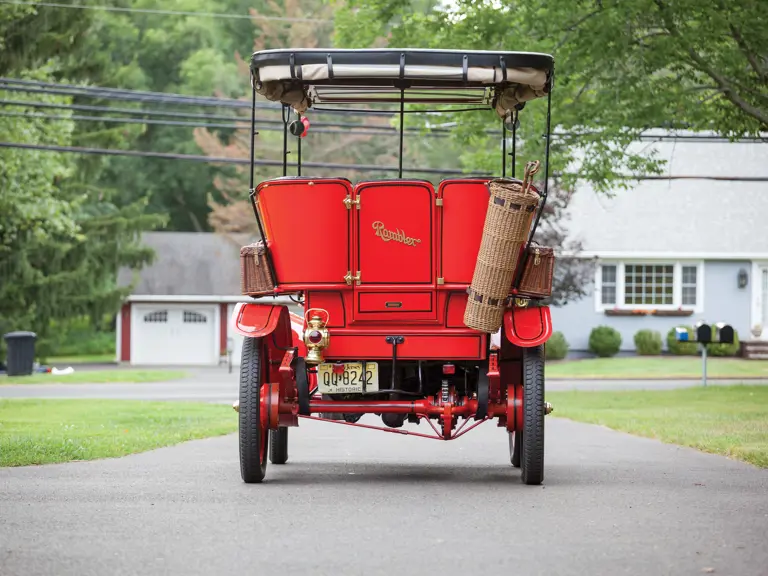

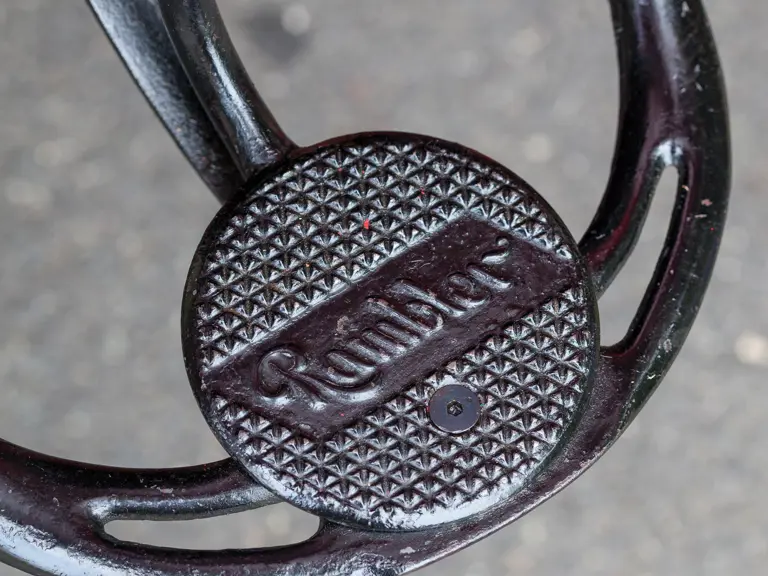
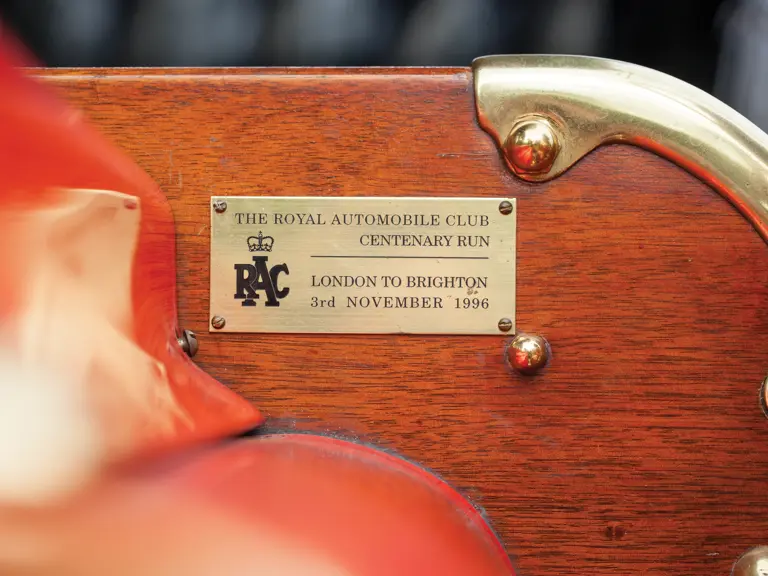
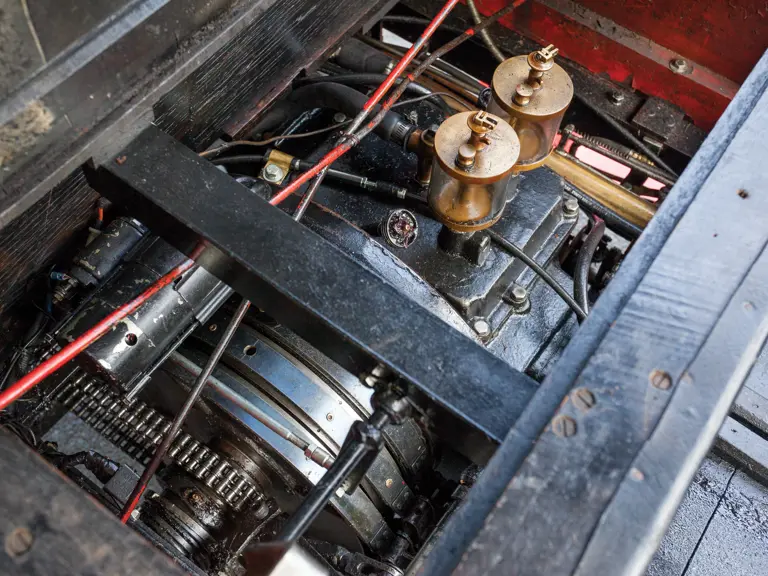
 | Hershey, Pennsylvania
| Hershey, Pennsylvania
